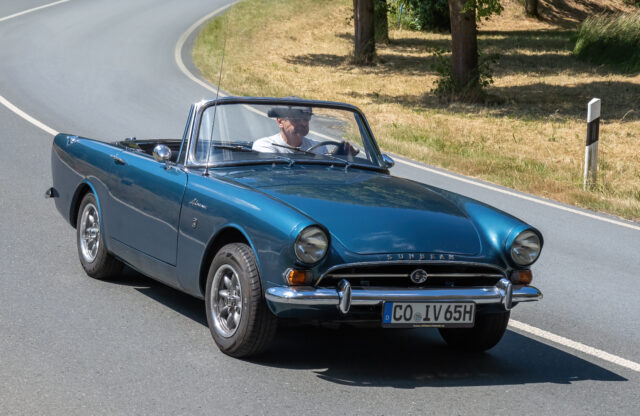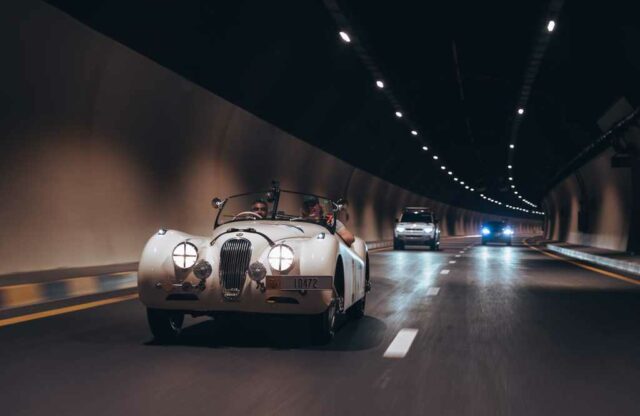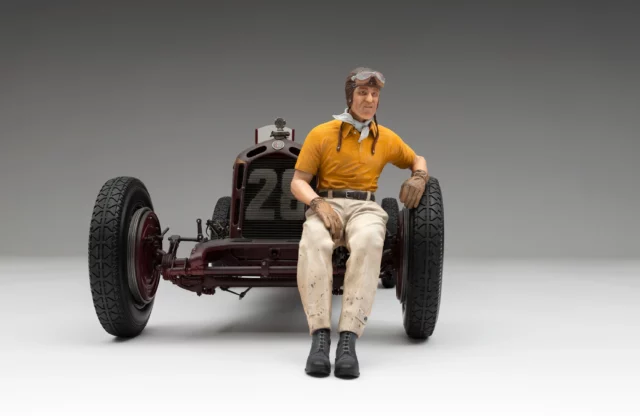The original Sunbeam Alpine had been a successful rally car, but Rootes – keen to capitalise on an apparently insatiable US appetite for British sports cars – knew it needed to up its game.
The result was the Series Alpine, which saw a Kenneth Howes and Jeff Crompton body draped over a Hillman 14/Hawk chassis and Rapier drivetrain, but with front disc brakes rather than drums. The newcomer also featured independent front suspension with coil springs, while there was a live axle and semi-elliptic springs at the rear. Power came from a 1.5-litre inline-four, which was upgraded to a 1.6 unit after a year for the Series 2.
In 1963 , the Series 3 saw more radical changes, with two models offered. The GT featured a removable hardtop only and had a detuned version of the 1.6-litre engine, while the ST boasted a soft-top that could be stored behind the rear seats. This Series 3 combined the high-fin look with the improvements more readily seen on the later cars: a roomier boot, tube- style rear dampers, better seats and a vacuum-operated brake booster.
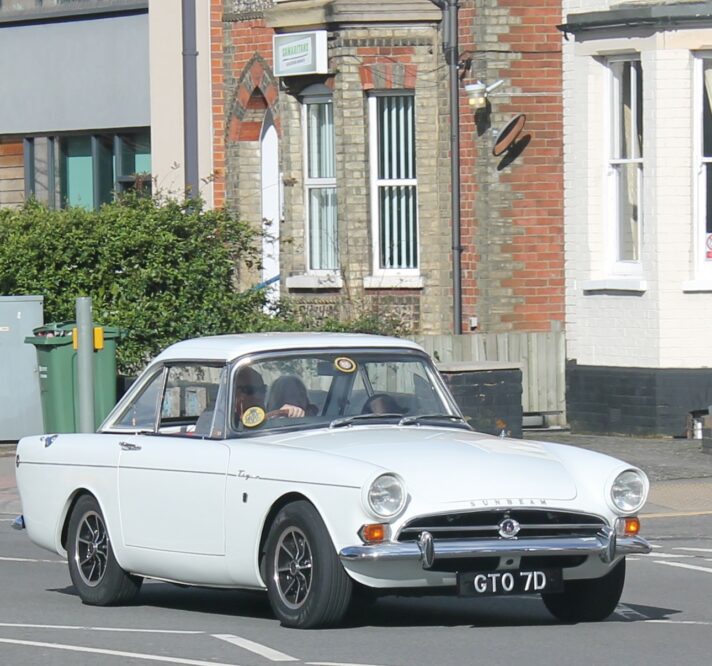
The Series 3 has still got the fins, but with the later, more usable boot and two fuel tanks. It's just a pretty car and the rarest version

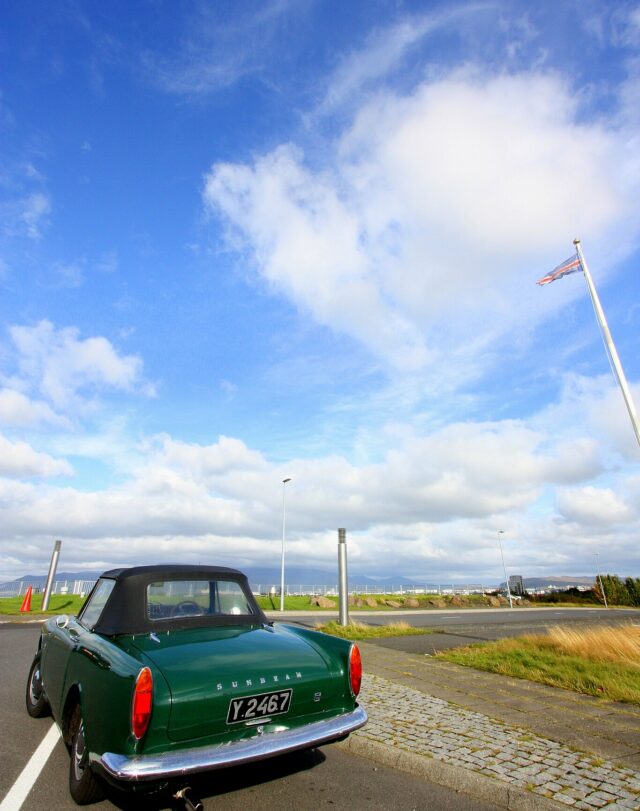
The Series 4 of 1964 saw the detuned engine dropped from the range, although the model lineage remained. The rear end was restyled with lower fins, too. And the Series 5 appeared in 1965 with a new 1.7- litre engine with a twin-carburettor-fed 93bhp. All production ceased in 1968.
The Alpine provided the basis of the Tiger, a Carroll Shelby-designed hot rod that blended a small, light roadster chassis with a big American V8 – something he had form for… Although much of the exterior remained the same as on the Alpine, the suspension was upgraded to deal with the 20 percent extra weight the Tiger carried. It used a Panhard rod on the rear axle and stiffer front springs.
While the factory designated only a Mk1 and Mk2, there are three versions. The Mk1 used a 164bhp 4.3-litre V8 that was good for 0-60mph in less than nine seconds. During its 1964-1967 run the Tiger’s exterior styling changed to match the Alpine’s panelwork, and as such these tend to be known as Mk1As. A Mk2 model with a 4.7 V8 was made available in 1967, but just ten cars stayed behind in Blighty.
“The Alpine is a good-looking car that certainly turns heads,” says Stuart Wilkinson of specialist Forest Custom and Classics. “They’re different to an MG or a Triumph, and are comfortable and drive really nicely. The Tiger is more of a hot rod, with more power, torque and that V8 sound.”
ENGINE AND GEARBOX
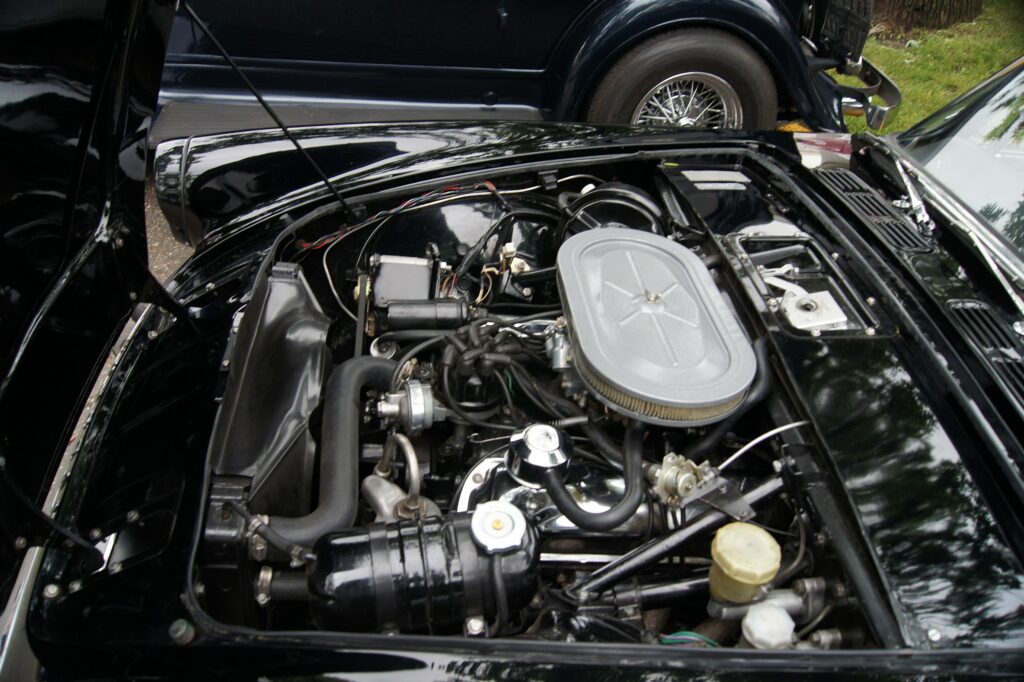
Aside from the usual checks for milky oil (water ingress) and blue smoke indicating worn bores, rings or tappets, check the oil pressures. At 2000rpm it should be 50psi for 1.5/1.6 engines, and 40psi for the 1.7. Any coolant leaking down the back of the block isn’t good news, because it means a core plug is likely to be corroded.
Manual gearboxes are long lasting, and rebuild kits are available should the worst happen; any rumbling indicates worn bearings. A non-functioning overdrive could be caused by electrical issues or worn servo seals. Automatic gearbox fluid should be red, not brown.
“Early ’boxes don’t have synchro on first gear – late ones do – and there are overdrive and non-overdrive units,” says Stuart. “Early clutches and later ones are different sizes, and if they get mixed up you can have problems with releasing the clutch and changing gear.”
The Tiger’s Ford V8 is well known, but accommodating such a large unit under the bonnet meant moving several items, and working on it can be challenging with such little space. There should be an access hole in the left-hand side of the trans tunnel to allow you access to spark plug eight. Given the engine’s innate tuneability, you’re likely to find modified examples: “If you start upping the power it’s advisable to upgrade the bushes and dampers and fit a larger anti-roll bar, but the brakes are the first weak link,” advises Stuart.
However the biggest problem relates to having such a big engine in a small space – cooling. “If the cooling system is not up to scratch you’ll have massive problems, such as overheating in traffic,” says Stuart. “A lot of aftermarket upgrades are available.” Meanwhile, the Tiger’s gearbox came from Ford, and is robust and easy to find bits for. “However, it’s only a four-speeder, so it’s not great for cruising,” says Stuart. “We’ve converted loads to a five-ratio transmission.” He advises that because it’s an exterior change, it’s prone to wear and eventually becomes sloppy. Clutches can be heavy.
SUSPENSION AND BRAKES
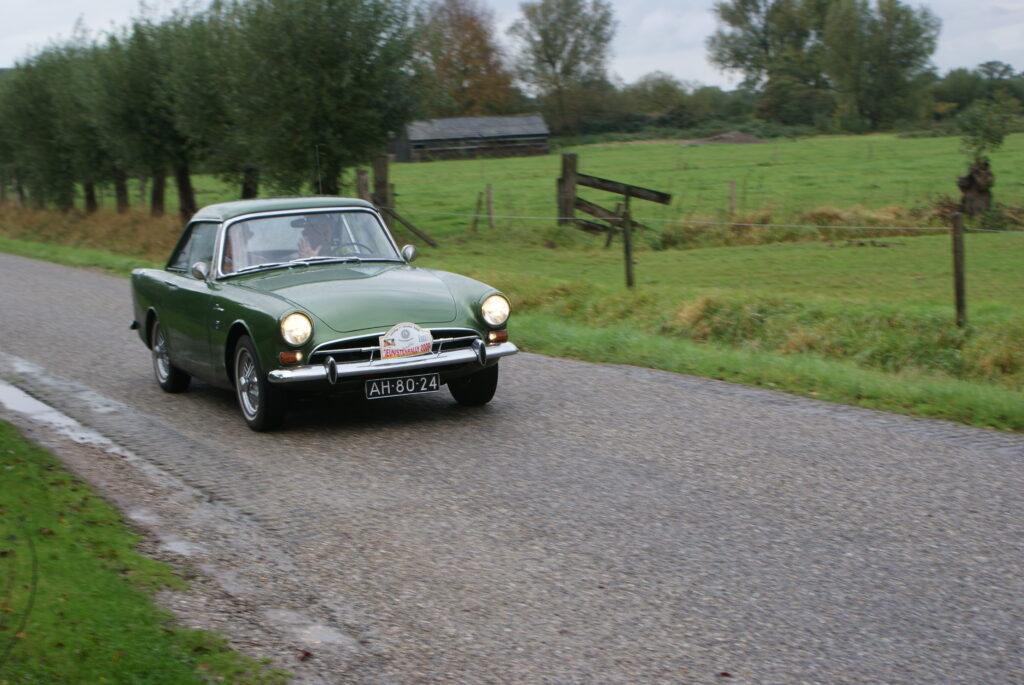
While the Alpine’s suspension is relatively simple, Series 1-3 cars require regular kingpin greasing; later cars use ball-joints that don’t, although they still need checking. Early cars have rear lever-arm dampers that could leak. There are a lot of joints between the steering box and the front wheels, so hoist the car in the air and get a friend to move the steering wheel back and forth to check for any play. Move the swinging link below the box – you shouldn’t be able to pull it down. If the caster angle is wrong, the alloy wedges under the front subframe may be corroded.
“The Tiger does have stiffer springs, but the dampers are the same as on the Alpine,” says Stuart. “The Tiger has a rack-and-pinion steering rack because the Alpine’s box wouldn’t fit due to the V8 powerplant being in the way.”
He says the rack’s geometry isn’t very good – “you can’t push a Tiger around the garage on full lock” – and that it’s heavy; upgrading to a power set-up is an option. “Check for play in the rack, rod ends, plus steering column top and bottom bearings,” adds Stuart. “Be very conscious of play here, as right-hand- drive steering racks are hard to locate.”
If you find fluid stains around the backplates of the rear drums, a leaking wheel cylinder is likely and hydraulic fluid has contaminated the brake shoes.
BODYWORK AND INTERIOR
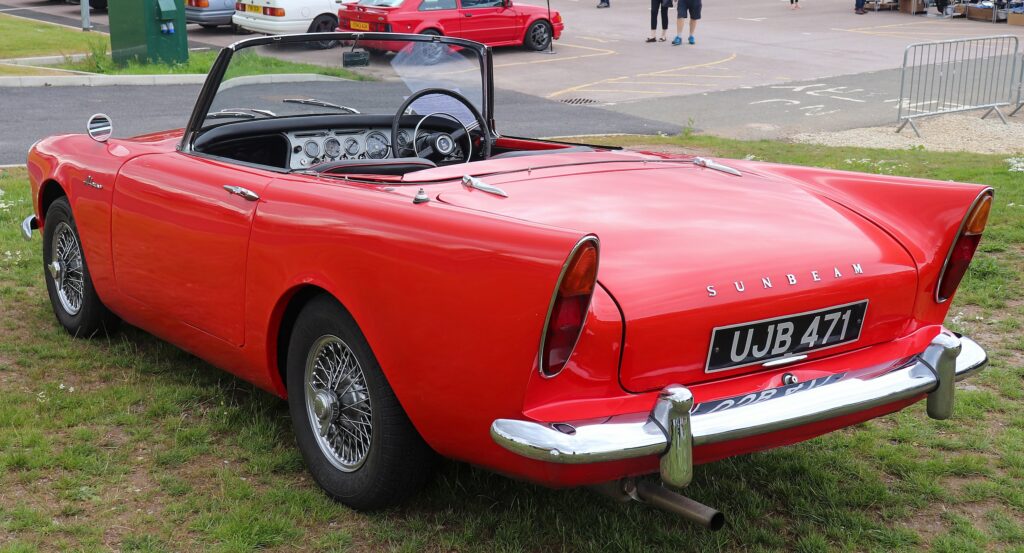
“Put the car on a ramp – the door gaps can widen, but if it’s excessive the inner sills have badly corroded,” says Stuart. Check for rust at the ends of the box sections, the reinforcing section at the chassis’s tail and the rear springs’ front mountings.
Other grot spots include the rear wheelarches, inner wings, bulkhead seams, boot floor and lid, sills, floors, front chassis legs and leading edge of the front wings over the headlamps. “The windscreen surrounds can also go, but you can’t see them because they’re under rubber,” says Stuart. The scuttle in front of the screen can corrode as well.
In hot countries, the sun can crack the black plastic dash top. “It’s a windscreen- out job to replace,” says Stuart, although the bits are readily available. “Gauges can be restored or new ones are available. The correct optional extra clock for each version is highly desirable.”
The electrics are simple, but a damaged or badly tweaked loom is best ditched for a replacement. “This is particularly true with amateur-fitted ammeters,” says Stuart. “With a wood dash, it’s a recipe for a fire.”
WHICH TO BUY

Such is the rarity of the Alpine and Tiger in RHD form, you may not have a great deal of choice. However, Stuart does have a firm favourite in terms of the Alpine: “The Series 3 – you’ve still got the fins on the back, but with the later, more usable boot and two fuel tanks,” he says. “It’s just a pretty car and the rarest version.”
There’s even less of a choice for Tigers, because there are hardly any in right-hand drive. Stuart has started to see originality becoming more desirable, but that’s not necessarily a good thing, he believes: “As originals they have skinny little wheels, not enough power and they don’t handle. They were really a hot rod from new, and as such I’d choose an early Mk1 ‘round corner’ car that’s been upgraded for more power and better handling.”
WHAT TO PAY

1966 Sunbeam Tiger Series 2 (UK)
Fair: £24,900
Good: £36,000
Excellent: £57,800
Concours: £67,800
1966 Sunbeam Tiger Series 2 (US)
Fair: $40,800
Good: $53,400
Excellent: $79,200
Concours: $134,000
SPECIFICATIONS
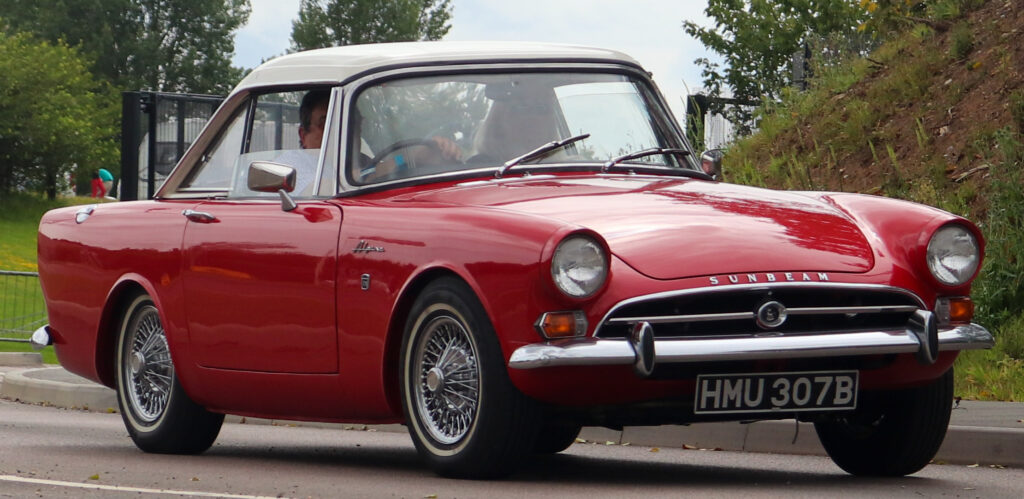
1.5-litre inline-four (Alpine Series 1)
Power: 78bhp
Topspeed: 101mph
0-60mph: 14.0 seconds
Economy: 28mpg
1.6-litre inline-four (Alpine Series 2-4)
Power: 82bhp ST/77bhp GT
Topspeed: 100mph
0-60mph: 14.0 seconds
Economy: 28mpg
1.7-litre inline-four (Alpine Series 5)
Power: 93bhp
Topspeed: 98mph
0-60mph: 13.6 seconds
Economy: 28mpg (est)
4.3-litre V8 (TigerMk1/1A)
Power: 164bhp
Topspeed: 120mph
0-60mph: 8.6 seconds
Economy: 24mpg
4.7-litre V8 (TigerMk2)
Power: 200bhp
Topspeed: 122mph
0-60mph: 7.5 seconds
Economy: 24mpg
